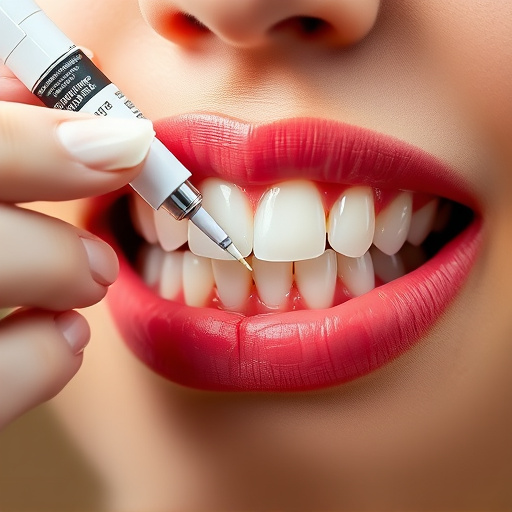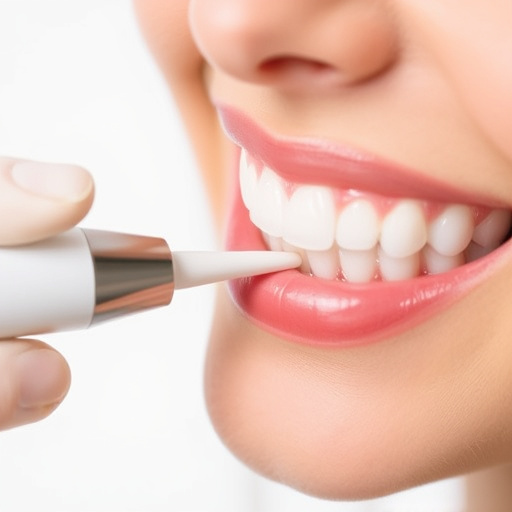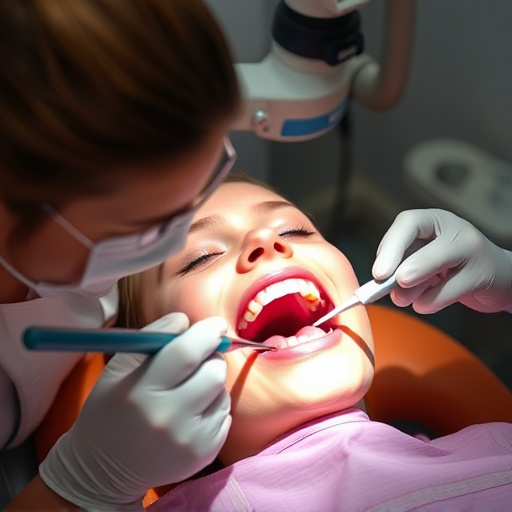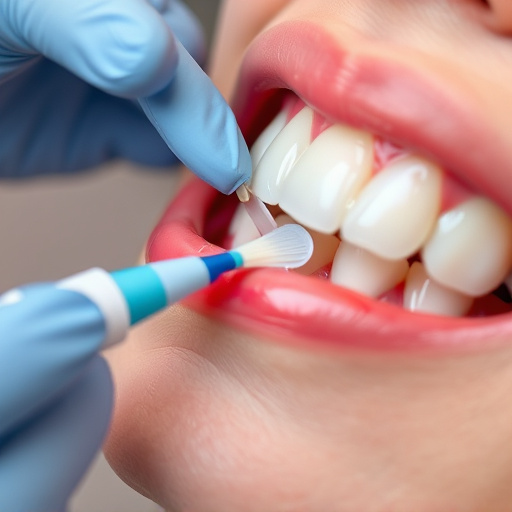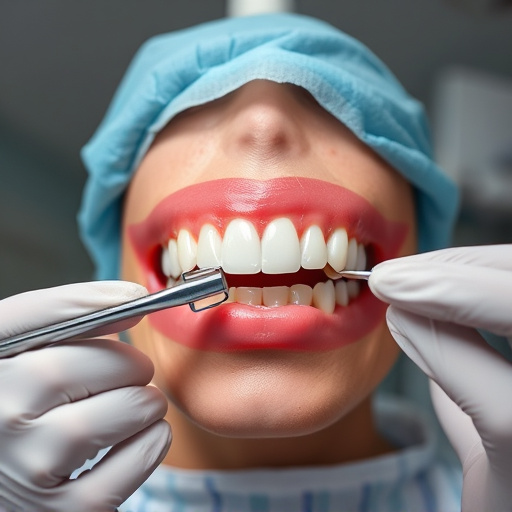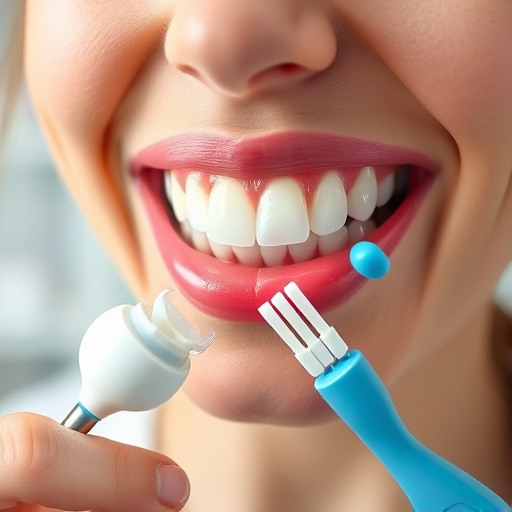Dental crowns and bridges are long-lasting, functional and aesthetic solutions for tooth restoration, offering both protection and replacement for damaged or missing teeth. Made from durable, biocompatible materials like porcelain, ceramic or metal alloys, they require proper oral hygiene and regular dental exams to maintain their integrity. Prompt care for any issues, such as chipping, is essential for optimal patient satisfaction and overall oral health.
Dental crowns and bridges are essential components of oral health, offering both functional and aesthetic benefits. This article delves into the long-term care required for these restorative dental procedures, guiding readers through understanding the materials used, maintaining optimal hygiene, and recognizing when replacement is necessary. By following proven strategies, you can ensure the longevity and durability of your dental crowns and bridges, contributing to a vibrant and healthy smile for years to come.
- Understanding Dental Crowns and Bridges: Materials and Durability
- – Overview of dental crowns and bridges
- – Types of materials used (e.g., porcelain, metal, zirconia)
Understanding Dental Crowns and Bridges: Materials and Durability
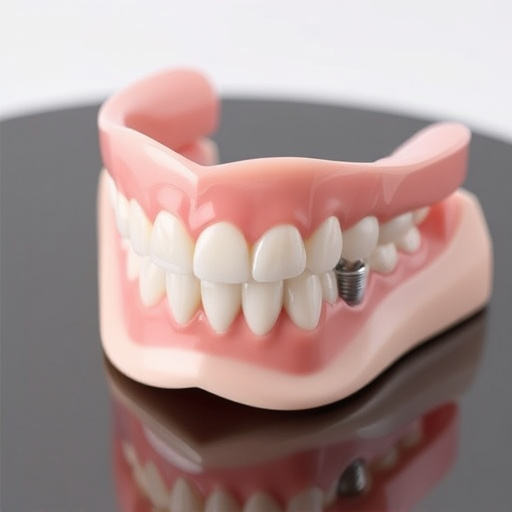
Dental crowns and bridges are essential components of comprehensive dental care, offering both functional and aesthetic solutions for tooth restoration. These restorative procedures are designed to mimic the structure and appearance of natural teeth, providing a durable and long-lasting fix for various dental issues.
Crowns, typically made from materials like porcelain, ceramic, or metal alloys, encase the entire visible portion of a damaged tooth. Bridges, on the other hand, involve a custom-made replacement tooth (or teeth) that is supported by adjacent natural teeth or implants. The choice of material plays a significant role in determining the longevity of dental crowns and bridges. Modern advancements in dentistry have led to the development of highly durable and biocompatible materials, ensuring these restorations can withstand everyday wear and tear for many years with proper oral hygiene and regular routine oral exams as part of preventive dentistry practices.
– Overview of dental crowns and bridges
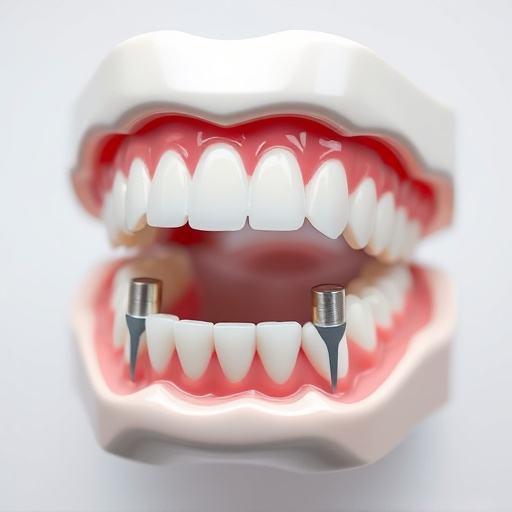
Dental crowns and bridges are essential components of long-term tooth restoration and replacement strategies. Crowns, custom-fitted caps that cover damaged or weakened teeth, serve as a protective layer, enhancing both functionality and aesthetics. They are often used to repair teeth after decay, cracks, or trauma, ensuring they can withstand daily chewing and biting forces. Bridges, on the other hand, replace missing teeth by connecting adjacent crowns to form a continuous arc of dental restorations. This not only fills gaps left by lost teeth but also maintains facial structure and prevents neighboring teeth from shifting.
Regular oral exams play a crucial role in identifying potential issues early on, allowing for timely interventions. During these visits, dentists can assess the condition of existing crowns and bridges, recommend repairs or replacements, and provide essential tooth repair services such as dental fillings to address minor problems before they escalate. This proactive approach ensures optimal long-term care for dental crowns and bridges, contributing to overall oral health and well-being.
– Types of materials used (e.g., porcelain, metal, zirconia)
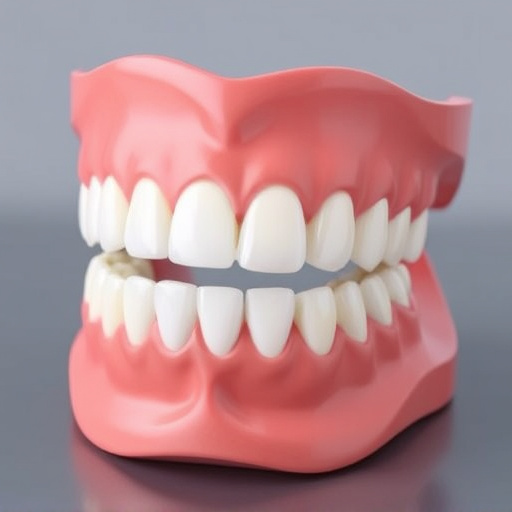
Dental crowns and bridges are common restorative procedures that require long-term care to maintain optimal health and appearance. The choice of material plays a significant role in determining the longevity and aesthetic appeal of these dental solutions. Traditional materials like porcelain offer natural color matching and excellent durability, making them suitable for visible teeth. Metal alloys, often used as substructures, provide strength and stability, especially in posterior teeth. More modern options include zirconia, known for its exceptional strength and biocompatibility, ensuring long-lasting results without causing allergic reactions.
Proper maintenance involves regular dental cleanings and meticulous oral hygiene practices. Even with these measures, occasional emergency dental care may be necessary to address issues like chipping or fracturing. Timely intervention is crucial in preserving the integrity of crowns and bridges, preventing further damage, and ensuring a patient’s long-term satisfaction with their dental restoration.
Dental crowns and bridges offer long-lasting solutions for tooth restoration, with proper care ensuring their durability. Regular cleaning, avoiding hard foods, and routine dental check-ups are key to maintaining these fixtures. While different materials have varying levels of resistance, all require conscientious maintenance. By understanding the material choices and committing to consistent care, individuals can expect their dental crowns and bridges to serve them for many years to come.








